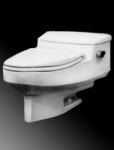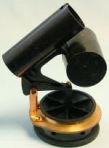
Any parent knows “back-to-school” is one of the most chaotic times of the whole year. You’re trying to establish new bedtime routines so everyone is up and ready on time in the mornings, battling the fall clothing migration as you store summer items and retrieve fall items only to realize that none of the school clothes your children could wear in May will fit them now, and getting everything relating to backpack organization, school lunches, and art supplies ready (which theoretically is supposed to make your life easier…hahahahaha…) – so we understand that water conservation really kind of takes a back burner during all of this. However, it really doesn’t have to, and since we strongly believe in teaching children good water-saving habits, we’ve compiled this list of five simple ways you can work water conservation into your new school year routine. Wanna know the best part? Many of these tips will also save you some money!

1. Use a timer for showers. Not only will this help save water by limiting everyone to 10 minutes or less in the shower, it can also help you keep everyone focused and on time in the mornings. If you shower in the evening, having a timer can also help speed things along at bedtime. Replace your existing shower head with a water-saving shower head for more water savings.
2. Reuse your towels. When you get out of the shower, you’re clean right? Instead of tossing towels into the hamper after each use, hang them up to dry and use them again tomorrow. Buy robe hooks or re-purpose an old coat rack to hang in the bathroom and designate a hook for everyone. Even most younger children can hang a towel on a hook much more easily than trying to fold and hang over a traditional bar, and it keeps the bathroom more organized and looking nicer than having a bunch of skewed, bunched up towels half hanging off the towel bars.
3. Be mindful of your other laundry. Some days you have to try on everything in your closet before you figure out what you really want to wear…or that you and your tween daughter both agree is appropriate for school…But are all those clothes dirty? Of course not! What about those jeans you wore yesterday? They could probably be worn again before needing to be washed. When undressing, evaluate what is actually dirty and what could be worn again before being washed, and you could save not only tons of water but lots of time and energy by doing less laundry. And who doesn’t want to do LESS laundry??? When you actually do laundry, also remember to set the appropriate load size and try to use cold water or try line drying to save more energy and water.
4. Encourage healthy eating and drinking water. We’re sure you do this for your kids already, but did you know that by eating fresh foods and drinking water you’re actually helping to save water and energy?  Generally, it takes a lot more water to produce processed foods than it does to actually grow fresh foods. Additionally, purchasing locally grown fresh fruits, vegetables, nuts, eggs, cheese, etc. cuts back on the amount of water needed to transport foods. We understand that not all towns or cities have a local farmers’ market and that sometimes this can be cost prohibitive, but it’s a choice worth considering and with careful planning and budgeting can be a positive, healthy change for your family. Another quick healthy tip that can potentially save you hundreds of gallons of water per year is to put a pitcher of water in the fridge for drinking instead of waiting for the tap to run cool. With this method, you can also add fresh fruits like strawberries, limes, or pineapple to infuse flavor in the water to help encourage kids to reach for a glass of water instead of sugary juices or sodas.
Generally, it takes a lot more water to produce processed foods than it does to actually grow fresh foods. Additionally, purchasing locally grown fresh fruits, vegetables, nuts, eggs, cheese, etc. cuts back on the amount of water needed to transport foods. We understand that not all towns or cities have a local farmers’ market and that sometimes this can be cost prohibitive, but it’s a choice worth considering and with careful planning and budgeting can be a positive, healthy change for your family. Another quick healthy tip that can potentially save you hundreds of gallons of water per year is to put a pitcher of water in the fridge for drinking instead of waiting for the tap to run cool. With this method, you can also add fresh fruits like strawberries, limes, or pineapple to infuse flavor in the water to help encourage kids to reach for a glass of water instead of sugary juices or sodas.
5. Consider the water footprint of products you use every day and try to make some changes. It’s a complex system, but water and energy are very closely tied together and it is sometimes difficult to understand how much water is really used to make the things we use all the time. Wherever you can, find ways to reuse or recycle things, or to create your own reusable items. Cloth shopping bags, reusable lunch baggies or containers, and reusable water bottles can replace their single-use alternatives to help save water. Now, we hear you saying – but doesn’t it take water to create and wash those too? Yes, it does, but the water consumed in creating and washing these reusable items is significantly less than what is wasted to create new single-use items. It’s estimated that it takes about 24 gallons of water to make one pound of plastic. Even if you buy a plastic reusable water bottle, you’re still helping to save water since that 24 gallons only has to be expended once instead of every single time you need water on the go.
If we focus only on one thing – packing lunches for school – think of all the ways you can save water…

By making simple changes in our daily routines and making a concentrated effort to really think about how we use water, we can all start saving this most precious of resources. And although it might seem difficult at times, remember that every drop counts! Your small changes DO make a BIG difference!
Want to learn more about saving water around the house and find water-saving innovations to help you out? Check out our Guide to Water-Saving Plumbing Products.








